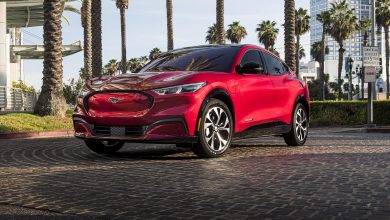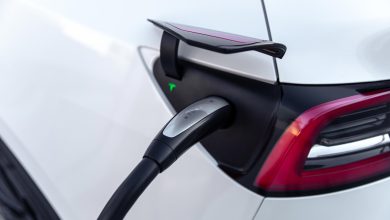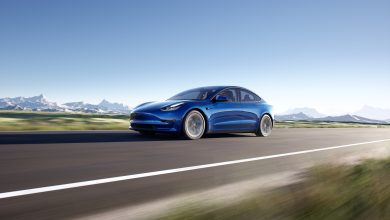
Tesla’s move to open up the Supercharger network to all-electric vehicles (EVs) is a development that has sparked much discussion and debate. One of the most significant consequences of such a move would be the increased activity at Supercharger stations, particularly on busy travel days. Currently, Tesla’s Superchargers are only accessible to Tesla owners, meaning that they are typically not overcrowded and have short wait times. However, this would undoubtedly change if the network were opened to all EVs. The number of users would increase significantly, potentially leading to longer wait times and congestion at the charging stations.
For Tesla owners, this can be frustrating, as they may have to wait longer to access the Superchargers they have become accustomed to using. However, it is important to note that Tesla has already taken steps to mitigate this issue, such as building out its Supercharger network and implementing a tiered pricing structure to encourage more efficient use of the stations. Moreover, Tesla can choose to only open up certain Superchargers to non-Tesla EVs, leaving some exclusive to Tesla owners.
For non-Tesla EV drivers, the opening up of the Supercharger network is an exciting prospect. The Superchargers are known for their reliability, speed, and convenience, making them an ideal charging option for long-distance travel. Currently, the public charging infrastructure for EVs is far behind the development of the cars themselves, making long-distance travel in non-Tesla EVs a challenge. With access to the Supercharger network, however, this can change, making non-Tesla EVs a more viable option for many drivers.
The Challenges of Supercharger Accessibility:
It is worth noting, however, that the increased activity at Supercharger stations can lead to other challenges. For example, some Superchargers may not be equipped to handle the increased demand, leading to technical issues or even outages. However, there may be issues with the design of the charging stations themselves, as they are specifically designed for Tesla cars, with the cable length and position designed to plug into the back left corner of the car, where Tesla vehicles all have their charging port.
Many other EVs have their charging ports in different locations, which can cause issues with parking and positioning at the Superchargers. This presents a unique challenge for non-Tesla EV drivers. When several non-Tesla EVs line up at the Supercharger station, they may have to park differently, potentially facing backward or even sideways. This could be frustrating and confusing for drivers who are not accustomed to parking in these positions. It could also create hassle and delays at the charging stations, particularly during busy periods.
Making Long-Distance Travel Easier: The Impact of Tesla’s Supercharger Network
As the electric vehicle market continues to grow and evolve, it is clear that there is a need for more and better charging infrastructure. The opening up of the Supercharger network could be a step in the right direction, even if it does present some design challenges along the way.
Tesla’s Supercharger network for all EVs can be a game-changer for the electric vehicle market, particularly for non-Tesla EVs. One of the biggest challenges facing electric vehicles right now is the lack of charging infrastructure, particularly for long-distance travel. Many EV drivers are forced to rely on slow and unreliable public charging stations, which can make road trips a frustrating and time-consuming experience.
Although Tesla’s Superchargers are different, they are known for their reliability, speed, and convenience, making them the go-to choice for Tesla owners who want to travel long distances. If these Superchargers were made available to all-electric vehicles, it could significantly improve the viability of non-Tesla EVs for long-distance travel.
This would be a major step forward for the electric vehicle market as a whole. Currently, the development of EVs is outpacing the development of charging infrastructure, creating a bottleneck that can slow down the adoption of electric vehicles. However, if more fast and more reliable charging options become available, it could spur more people to switch to electric vehicles, further accelerating the transition away from fossil fuels.
Of course, there are some challenges to opening up the Supercharger network to all EVs, as discussed above. Despite these challenges, however, the potential benefits of opening up the Supercharger network to all EVs are significant. It could be a major step forward in the development of a more integrated and streamlined charging infrastructure, making electric vehicles a more viable option for all drivers. Tesla may still have an advantage in terms of its proprietary charging network, but opening up its Superchargers to all EVs would be a major step forward for the entire industry.
Is Tesla Opening Up Its Supercharger Network to All EVs a Good Move or a Risky Gamble?
Tesla has long been a leader in the electric vehicle market. These fast and reliable charging stations have made it possible for Tesla owners to travel long distances without having to worry about running out of power. One of the biggest advantages of their Superchargers is their reliability. Unlike many public charging stations, which can be slow, unreliable, or even out of order, Tesla’s Superchargers are known for their impressive and consistent performance.
In addition to their reliability, Tesla’s Superchargers also offer internet connectivity, which can make them even more convenient for drivers. The owners can use the Supercharger’s touchscreen display to access maps, weather information, and other useful features while also staying connected to the internet for work or entertainment.
Will Access to Competitors challenge Tesla’s Dominance in the EV Market?
If Tesla opens up its Supercharger network to all-electric vehicles, it will make long-distance travel much more viable for non-Tesla EV drivers. Many electric vehicles already offer an impressive range, but without a fast and reliable charging network to support them, they can be impractical for long trips. Thus, with access to Tesla’s Superchargers, these vehicles will suddenly become much more appealing to drivers who need to travel long distances.
And as for the question of whether drivers would choose a non-Tesla EV if it had access to Tesla’s Superchargers, the answer is likely a resounding yes. Vehicles like the Porsche Taycan, the Rivian R1T, and the Polestar 2 are already drawing rave reviews from drivers and critics alike. However, the ability to access Tesla’s Superchargers would certainly make them a great purchase. Hence, only time will tell if Tesla’s decision to open up its Supercharger network will lead to a shift in the EV market, but one thing is certain: the competition just got a little more interesting.




